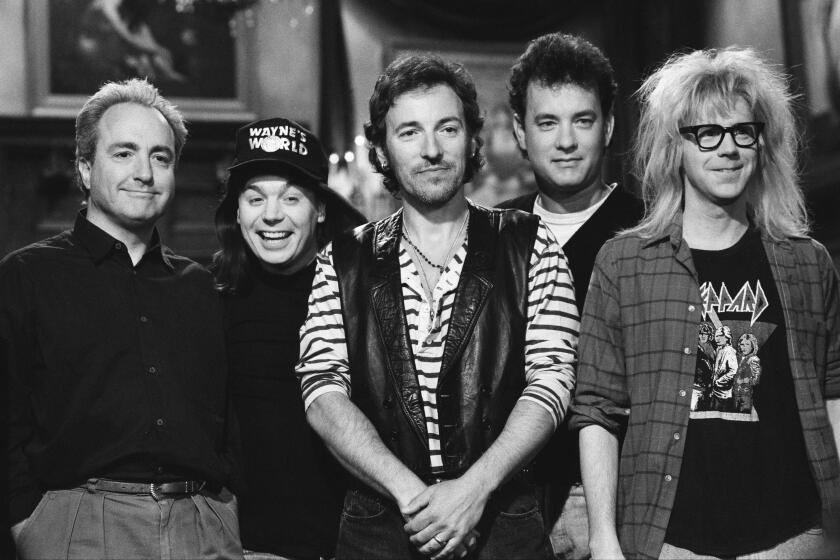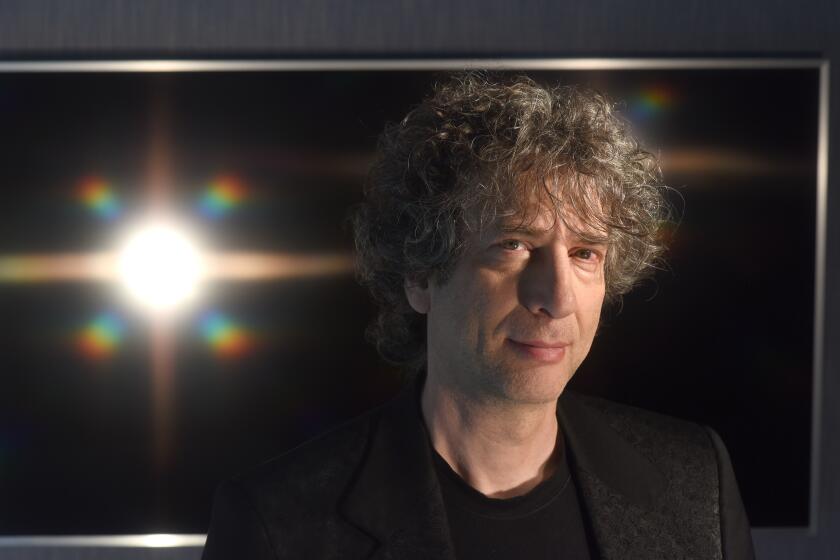BOOK REVIEW : From Frying Pan of Communism Into Fire of Nationalism : GRAY DAWN The Jews of Eastern Europe in the Post-Communist Era <i> by Charles Hoffman</i> ; HarperCollins; $25; 384 pages
- Share via
On the eve of World War II, nearly 6 million Jews lived in Germany, Poland, Hungary, Romania and the other countries of Eastern Europe.
Today, after the Holocaust and the postwar exodus, barely 150,000 Jews remain in what was once the site of a rich, accomplished and complex Jewish civilization that far transcended the shtetl culture so familiar to us from countless performances of “Fiddler on the Roof.”
“Little remains of Tevye’s world today except ashes,” writes Charles Hoffman in “Gray Dawn,” a report on the fate of the Jews of Eastern Europe. “The life of the shtetl has been extinguished both physically and spiritually.”
What remains--and what is described in “Gray Dawn”--is “a remnant of a remnant,” a scattering of Jewish communities that somehow managed to survive in the cracks of history and now face the brave new world of post-Communist Europe. They exist in “the narrow space between past and future,” as Hoffman puts it, where they are torn between anguish and exhilaration.
Hoffman is a Texas-born Israeli journalist who traveled through Eastern Europe during the momentous days of 1989 and 1990, when the Communist regimes were tumbling but the new order was still clouded with uncertainty. Thanks to the mere passage of time, at least one of the places he visited no longer exists as such (East Germany) and another (Czechoslovakia) will not exist much longer.
Of course, the author can hardly be faulted for the fact that the geopolitics of Europe have outdistanced his book. But it does highlight a basic flaw in “Gray Dawn”: It’s essentially a work of journalism, five long magazine articles stitched together between hard covers, but the passage of time has overtaken his reportage.
Hoffman is well versed in the history of European Jewry, and he’s especially attuned to the contemporary organizational politics of Judaism in the Diaspora. Indeed, he devotes as much attention to social, cultural and historical origins of the Jewish communities as to their current troubles and their likely prospects, which may be illuminating but tends to throw the book out of balance.
Then, too, Hoffman is rather too sensitive to the theme of Jewish identity in the Diaspora. For example, he belabors the question of whether a Jew living in Hungary is properly called a Hungarian Jew or “a Hungarian of Mosaic persuasion.” And sometimes he displays a streak of political correctness that struck me as misplaced and even heartbreaking, as when he vehemently insists that the Jews of Czechoslovakia, on their way to the gas chambers at Auschwitz, sang the Zionist anthem “Hatikvah” and not merely the Czech national anthem.
To his credit, Hoffman is a sympathetic observer and analyst of the Jewish communities that went from the frying pan of Communism into the fire of resurgent nationalism in the former Soviet bloc, and he tries to help us understand the peculiar destiny of a Jewish remnant that survived against all odds in a land that is haunted by memories of death and destruction. Now and then, he offers an anecdote or a profile that illuminates the plight of these men and women.
“Religious I am not, Hebrew I never learned, and of Jewish manners and customs I know little,” declares Irene Runge, an exemplar of the “protected species” of Jews still living in Germany. “I took this decision (to join the community) because I wanted to join the circle of those with whom, more or less, I share my history. . . . We exist despite Hitler.”
“Gray Dawn” gamely tries to show us that the Jews of Eastern Europe have at least “the possibility of a future”--but we are left with a sense of despair about the fate of these marginalized Jewish communities.
Hoffman, for example, points out that the historic Alneuschul synagogue of Prague is maintained as a museum for six days of the week--only on the Sabbath is it allowed to function as a place of worship. Even after the fall of Communism, however, the place is still threatened by the encroachment of the museum curators on the handful of Jews who pray there. The same fate, one fears, awaits all of the Jews of Eastern Europe.
“If they succumb, yield their last bit of liberated Jewish space to the antiquarians,” Hoffman writes “they might as well be stuffed and mounted themselves for an exhibit entitled ‘The Last Jews of Prague.’ ”
More to Read
Sign up for our Book Club newsletter
Get the latest news, events and more from the Los Angeles Times Book Club, and help us get L.A. reading and talking.
You may occasionally receive promotional content from the Los Angeles Times.









